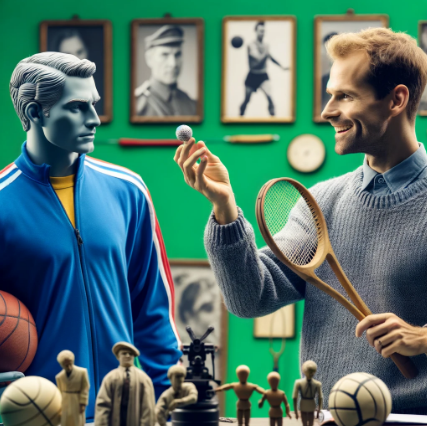The art of bringing the visceral thrill of sports competitions to the silver screen and stage is a nuanced craft that requires the concerted efforts of directors, actors, and artists. These creatives work tirelessly to replicate the intensity, camaraderie, and drama of sports, ensuring audiences are transported right into the heart of the action. This exploration delves into the intricate processes behind the scenes, revealing how the realistic portrayal of sports is achieved in film and theatre. However, not everyone seeks this thrill through traditional mediums; some prefer the adrenaline rush found in the virtual world of online casino, where the stakes are high, and the competition is just a click away.
As we applaud the creativity and dedication behind sports productions, it’s worth highlighting platforms such as 1xbet, which not only allow us to follow live sports events but also offer an immersive experience through games like the Aviator 1xbet. This blend of watching and participating in sports, coupled with engaging in games, reflects a unique intersection of sports enthusiasm and interactive entertainment, bringing fans closer to the action in more ways than one.
The Director’s Playbook: Vision Meets Precision
Crafting the Scene
Directors play a pivotal role in transforming a script’s static words into dynamic, believable sports action. Their vision guides the project, from the conceptualization of each scene to the final cut. They work closely with choreographers, especially in complex sports scenes, to design sequences that are not only accurate but also narratively compelling.
- Pre-visualization: Directors often use storyboards and animatics to pre-visualize the scenes. This helps in planning the shots required to make the scenes as realistic as possible.
- Rehearsals: Extensive rehearsals are conducted, sometimes with actual athletes to guide the actors in mimicking professional sports movements accurately.
- Camera Angles and Techniques: The use of specific camera angles and filming techniques, like high-speed cameras for slow-motion shots, adds to the intensity and realism of sports scenes.
Collaborating with Technical Experts
A director’s vision is brought to life not just by the actors but by a team of technical experts. Cinematographers, sound engineers, and visual effects teams work in harmony to create the illusion of a live sports event.
- Sound Design: The roar of a crowd, the thud of a ball, and the sharp whistle of a referee are meticulously recorded and sometimes recreated to enhance the authenticity of the sports environment.
- Visual Effects: For scenes that are impossible to shoot in a real sports setting, visual effects provide a solution, making it feasible to depict grand sports arenas or complex action sequences.
Actors: More Than Just a Physical Challenge
Actors in sports films and theatre productions face the dual challenge of delivering a compelling performance while also convincingly portraying skilled athletes. This often requires a rigorous training regimen, similar to that of real athletes, to accurately depict the physicality of sports.
- Physical Training: Actors undergo intensive training to build the physique and stamina required for their roles, often under the guidance of professional coaches.
- Skill Acquisition: Learning the specific skills of the sport they are portraying is crucial. This might involve months of training to perform convincingly on screen or on stage.
The Role of Set and Costume Designers
Set and costume designers are unsung heroes in the quest to recreate the atmosphere of a sports competition. Their attention to detail ensures that every element, from the sports uniforms to the arena itself, contributes to the overall authenticity of the production.
Bringing the Arena to Life
The design of the set is critical in sports films and theatre productions. Whether it’s a replica of a famous stadium or a fictional sports arena, the set needs to convincingly represent the real thing.
- Authenticity: Designers often collaborate with sports historians and visit actual sports venues to capture the essence of the environment accurately.
- Functionality: The set must not only look real but also be functional for the actors to perform the sports scenes convincingly.
Costume Design: More Than Just Uniforms
Costume designers work to ensure that the sports attire worn by the actors is period-appropriate and accurate to the sport being portrayed. This involves:
- Research: Studying historical sports uniforms and equipment to replicate them faithfully.
- Customization: Tailoring costumes to fit the actors perfectly, allowing them freedom of movement for the physical demands of their roles.
 Conclusion
Conclusion
The journey behind the scenes of creating sports films and theatre productions is a testament to the dedication and creativity of the teams involved. From directors to actors, and from set designers to costume designers, it takes a village to bring the spirit of competition to life in a believable manner. These efforts ensure that audiences can experience the thrill of sports, not just as spectators but as if they were in the heart of the action themselves.


